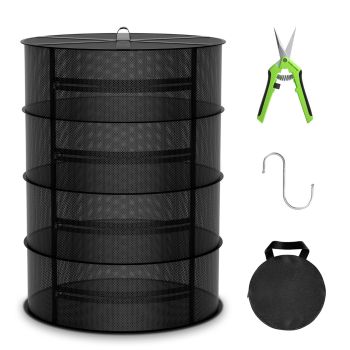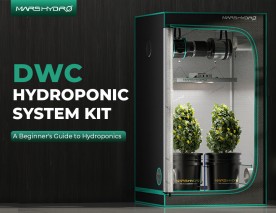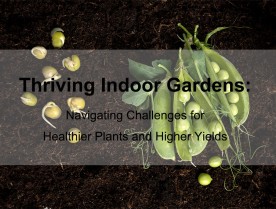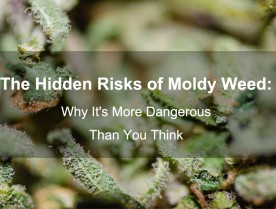
Weed, a plant as renowned for its distinct aroma and effects as it is enveloped in myths and misconceptions. Among the questions often overlooked—yet crucial for both enthusiasts and casual consumers—is: Does weed expire? This seemingly simple inquiry opens the door to a fascinating discussion about the longevity, potency, and safety of stored weed. In this blog post, we'll delve into the mysteries of weed's shelf life, explore how it changes over time, and provide practical tips to preserve its freshness. Whether you're a seasoned smoker or just beginning to explore the world of weed, understanding how weed degrades is essential for maximizing your experience. Join us as we navigate the intriguing aspects of weed preservation.
Does Weed Expire?
Yes, weed does expire, but not in the traditional sense like perishable foods. Weed, including medical weed and various weed flowers, doesn't become unsafe as it ages, but it does lose its efficacy and flavor. The primary concerns with old weed are the loss of potency and the development of mold. Proper storage can significantly extend the shelf life of weed, preserve the freshness of the plant material, and prevent mold growth by avoiding direct sunlight and maintaining optimal storage conditions.
Indeed, weed doesn't have a "general expiration date" like many foods. Unlike a carton of milk that can spoil within a week, weed doesn't become unsafe to consume as it ages—it simply loses its flair. Over time, the breakdown of cannabinoids and terpenes, the magical compounds responsible for its effects and flavor, leads to a decrease in potency and a less vibrant taste and aroma.
So, how long can you expect your weed to stay in prime condition? The shelf life of your stash depends significantly on how it is stored. With proper storage methods, weed can retain its quality, safety, and efficacy for up to a year, and sometimes even longer. The longevity of weed is influenced by several key factors: light, air, temperature, and humidity. Exposure to any of these elements can accelerate the degradation process, so mastering the art of storage is essential to ensure your weed remains as potent and flavorful as the day you bought it.
When it comes to different weed products, each type has its own shelf life:
-
Weed Flower: Typically, a marijuana flower can stay fresh for up to a year if kept in a cool, dry, and dark place. Airtight glass mason jars are ideal for maintaining an airtight seal that prevents too much moisture, which can lead to mold and mildew.
-
Concentrates: Products like vape oil and Rick Simpson oil can retain potency for up to two years when stored properly in dark, cool conditions. Freezing can extend this time, but always ensure they are in an airtight container to prevent any moisture ingress.
-
Edibles and weed-Infused Candies: These products tend to follow the shelf life of the non-weed ingredients used. Baked goods may last a short while, but high proof alcohol infusions or weed-infused candies can last up to a year or more under the right conditions.
-
Topicals and weed-Infused Cosmetics: Like regular beauty products, these should ideally be used within a year. Check for changes in smell, texture, or color, as these can indicate the product is past its best.
-
CBD Tinctures and Other Tinctures: Due to their alcohol or glycerin base, these can have a lengthy shelf life, often up to ten years, when stored in a cool, dark place in their original, tightly-sealed containers.
By understanding and implementing proper storage techniques, you can maximize the life span of your weed products, ensuring they remain effective and enjoyable for as long as possible.
Essential Storage Tips for Optimal Preservation
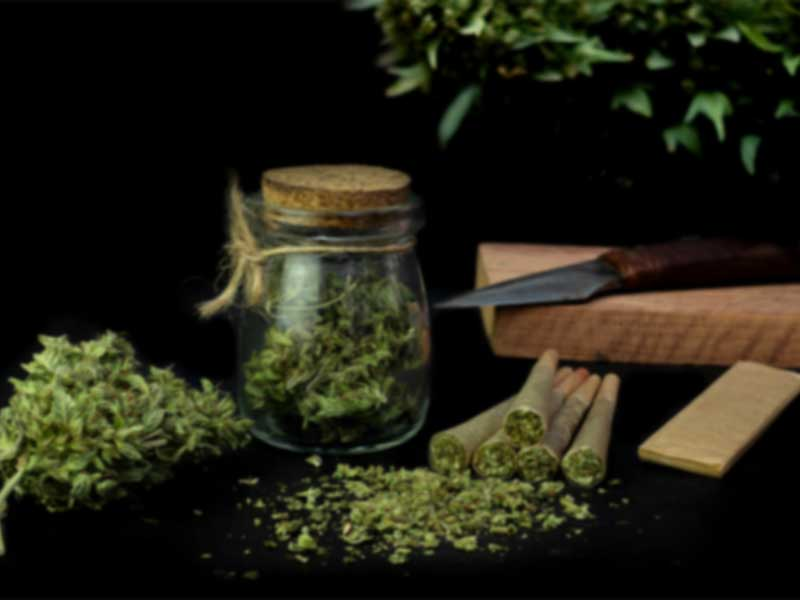
Mastering the art of storing your weed products is crucial for maintaining their potency, flavor, and overall quality. Here are some pro tips to help you get the most out of your stash:
For Flower:
- Avoid Light and Heat: UV rays and heat can break down cannabinoids and terpenes quickly. Store your flower in a cool, dark place. A drawer or a cabinet can be ideal.
- Control Humidity: Aim for a relative humidity of 59% to 63%. This can be achieved using humidity packs that maintain the optimal moisture level, preventing your buds from drying out or becoming too moist, which could lead to mold.
Additionally, when it's time to dry your flower after harvesting, consider using a specialized drying solution like the Mars Hydro Mesh Herb Drying Rack. This rack facilitates even air circulation and optimal drying conditions, crucial for preparing your buds for storage. It also includes pruning shears to help with trimming, ensuring your flower is well-prepared for both drying and long-term storage.
For Concentrates:
- Keep It Cool: Heat is a big no-no for concentrates, as it can degrade the potency and flavor. The fridge or freezer is perfect, but make sure your product is in an airtight container to prevent any moisture from seeping in.
- Minimize Exposure: Every time you open your concentrate container, you expose it to air and environmental contaminants. Try to keep this to a minimum.
For Edibles:
- Follow Food Guidelines: Just like any other food item, follow the storage instructions provided. Refrigeration can extend the life of perishable edibles, such as cookies and brownies.
- Seal Them Tight: Air can degrade edibles just as it does other weed products. Use airtight containers or resealable bags to keep them fresh.
For Topicals:
- Store in Controlled Conditions: Avoid leaving topicals in places with fluctuating temperatures and light exposure. A medicine cabinet or a drawer in a cool, dry room is usually a good spot.
- Check Integrity: If the color, smell, or texture changes, it might be time to dispose of the product.
For Tinctures:
- Dark Glass Bottles: Most tinctures come in colored glass bottles for a reason; they protect the contents from light, which can degrade the active compounds. Store them in their original containers in a cool, dark place.
- Keep the Cap Tight: Always make sure the cap is securely fastened after each use to avoid evaporation and oxidation.
By following these guidelines, you can ensure that your weed products remain effective and enjoyable for as long as possible. Remember, taking a little extra care with how you store your weed can make a big difference in your overall experience.
Signs Your weed May Have Expired
Identifying when your weed has lost its quality is key to ensuring a safe and enjoyable experience. Here are the indicators that your weed might have gone bad:
1. Unpleasant Smell and Taste:
- Smell: Fresh weed should possess a pleasant, aromatic scent. If your stash starts to emit a musty, moldy, or generally off smell, resembling rotten eggs or mold, it's a clear sign of deterioration.
- Taste: Fresh weed typically has a clean, crisp taste. When it starts to taste musty, unpleasant, or harsh, it's a clear indication that the quality has declined, and it might be time to discard the product.
2. Change in Appearance:
- Color: Fresh weed flowers usually display vibrant greens. Over time, exposure to air and light can cause the color to change. While a slight fading is normal, significant darkening or a shift to a brownish hue suggests degradation.
- Signs of Mold: Be vigilant for white fuzz or any patches of powdery mildew and gray mold. These are not only signs that the weed is no longer potent, but also that it could be dangerous to consume.
3. Texture Changes:
- Dryness: Properly cured weed maintains a slight stickiness and should be resilient when handled. If the buds are overly dry and crumble into a fine powder easily, they have likely lost their essential oils and are too dry.
- Crumbliness: If handling your buds results in them breaking apart readily, this is a strong indicator that they have dried out and lost their beneficial properties.
4. Presence of Mold and Mildew:
- The most alarming sign of expired weed is the presence of mold and mildew. If you observe any white or green fuzzy spots, or if the weed smells like damp grass, it's crucial to dispose of it immediately to avoid health risks. Mold can produce mycotoxins that are harmful when inhaled or ingested, particularly dangerous for individuals with allergies or compromised immune systems.
By staying alert to these signs, you can ensure that your weed consumption remains safe and pleasurable. Always inspect your weed before use and store it properly to extend its shelf life and preserve its quality.
Impact of Using Expired Weed

While expired weed doesn't pose the same risks as many spoiled foods, there are still some effects to consider if you choose to use weed that has degraded significantly.
Reduced Potency: The most immediate and noticeable effect of expired weed is reduced potency. THC, the primary psychoactive compound, degrades over time into CBN (cannabinol), a compound with different effects. CBN is less psychoactive but more sedative, which might not be desirable if you're looking for the energizing or euphoric effects commonly associated with THC.
Harsher Smoke: As weed dries out and degrades, it becomes harsher when smoked. This can lead to an unpleasant smoking experience, characterized by rough, hot smoke that can irritate your throat and lungs. This irritation might discourage you from enjoying your session and could contribute to respiratory discomfort.
Unpleasant Flavor: Over time, the aromatic terpenes that contribute to weed's distinctive flavors dissipate or alter their chemical structure. What’s left is a stale, sometimes musty flavor that lacks the fresh, vibrant qualities of well-preserved buds.
Potential for Mold and Mildew: The most significant risk of using old weed comes from the potential growth of mold and mildew, which can be harmful if ingested or inhaled. Moldy weed can produce mycotoxins, harmful compounds that can lead to respiratory issues and other health problems, especially in those with compromised immune systems or allergies to mold.
Less Therapeutic Benefits: For medical weed users, the degradation of cannabinoids and terpenes means not only less potency but also reduced therapeutic effects. This can affect how effectively it can manage symptoms like pain, insomnia, or anxiety, potentially diminishing the quality of life for patients who rely on weed for medical purposes.
What to Do with Old Weed?
If you find yourself with weed that has lost some of its potency or freshness but isn't moldy, you don't necessarily need to discard it. There are several creative ways to repurpose this older weed effectively:
1. Make Edibles:
- Older weed can still be quite useful in the kitchen. You can extract its remaining cannabinoids by making weed-infused butter or oil. This can then be used in various recipes such as brownies, cookies, or other baked goods. The heat from cooking can activate the remaining cannabinoids, making this a great way to utilize less potent weed.
2. Create Topicals:
- Infusing oils like coconut oil or shea butter with older weed can produce effective topicals such as creams or balms. These products are beneficial for treating skin conditions or relieving joint and muscle pain. The topical application of cannabinoids can provide therapeutic benefits, even if the weed is not as potent as it once was.
3. Compost It:
- For those with a green thumb, composting old weed is an excellent way to recycle and enrich your garden soil. weed plant material decomposes and adds nutrients back into the soil, which can benefit your garden's overall health and growth.
While older weed may not provide the best flavor or the highest potency, it is generally safe to use as long as there are no signs of mold or a distinct smell of decay. However, it is crucial to exercise caution, particularly if you have health concerns or a compromised immune system. Always inspect older weed for any signs of mold, which can lead to lung infections if inhaled. If you're uncertain about the quality or safety of your aged weed, it's better to err on the side of caution and dispose of it, particularly to avoid the health risks associated with inhaling or ingesting mold spores.
By using these methods, you can ensure that even older weed does not go to waste and can still offer benefits in various forms, whether as a culinary ingredient, a topical remedy, or a contribution to your compost.
Conclusion
Proper weed storage and understanding the expiration dynamics of different weed products can significantly impact their effectiveness and safety. By using proper storage methods like vacuum-sealed plastic bags or glass mason jars and following the general expiration date guidelines, consumers can ensure they enjoy the maximum benefits of their weed. Whether you're using vape cartridges, enjoying freshly baked weed goods, or applying topical creams, knowing how to properly store and recognize when weed is past its prime will help you maintain a safe and enjoyable experience. Let this knowledge empower you to make informed choices about how and when to consume weed, ensuring that every interaction with this versatile plant is as beneficial as possible.

